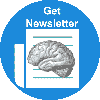 | PCP - Phencyclidine |  |
 | PCP - Phencyclidine |  |
What is PCP?"Angel Dust," "Hog," "Rocket Fuel," "DOA," "Peace Pill" - these are other names for the illegal drug phencyclidine (PCP). PCP was developed in the 1950s as an anesthetic. However, the use of PCP as an anesthetic was stopped after some people experienced psychotic reactions after using the drug. PCP is now made illegally and has found its way onto the street, often contaminating other street drugs. In fact, PCP is often sold in place of drugs such as LSD and mescaline. According to the Monitoring the Future survey of drug trends, 2.3% of 12th graders in the United States used PCP sometime during the year 2000.PCP is classified as a dissociative anesthetic because users appear to be "disconnected" from their environment: they know where they are, but they do not feel as if they are part of it. The drug has different effects on different people. It can act as a stimulant, a depressant, an analgesic (decreasing pain) or a hallucinogen depending on the dose and route of administration. The effects produced by PCP are different from those caused by hallucinogens such as LSD. Rather than producing visual hallucinations, PCP causes changes in body image. In addition to these distortions of reality, PCP can cause frightening side effects such as feelings of terror and confusion. |

PCP (Image courtesy of the Indiana |
Behavioral Effects of PCPPCP can be eaten, snorted, injected or smoked. Depending on how a person takes the drug, the effects are felt within a few minutes (2-5 minutes when smoked) to an hour. PCP can stay in a person's body for a long time; the half-life of PCP ranges from 11 to 51 hours. Furthermore, because PCP is made illegally under uncontrolled conditions, users have no way of knowing how much PCP they are taking. This makes PCP especially dangerous.PCP users are often characterized as violent or suicidal. However, this portrait of a PCP user may not be accurate. Dr. Jaime Diaz, a professor in the Department of Psychology at the University of Washington, reviewed many of the published reports of PCP use in his book, How Drugs Influence Behavior. A Neuro-Behavioral Approach (Upper Saddle River (NJ): Prentice Hall, 1997). He states that PCP use rarely results in violence and concludes that:
Dr. Diaz believes that the reported violent behavior is not due to the pharmacological effect of PCP, but rather is the result of the way people under the influence of PCP perceive things and are subsequently treated by law enforcement personnel. People under the influence of PCP may not feel pain and their perception of sensory stimuli may be altered, possibly causing police officers to use stronger methods to control such individuals. |
% of 12th Graders Who Have
Used PCP
Sometime During Their Lifetime  (Source: Monitoring The Future Survey) |
| Dose | Effect |
| Low | Feelings of euphoria (well-being), relaxation, numbness, sensory distortions, feelings of detachment from one's own body, anxiety, confusion, amnesia, illogical speech, blurred vision, blank stare |
| Medium | Confusion, agitation, analgesia, fever, excessive salivation, "schizophrenic-type" behavior |
| High | Seizures, respiratory failure, coma, fever, stroke, DEATH |
| Tolerance and dependence on PCP are possible. Withdrawal symptoms include diarrhea, chills, tremors. | |
Effects of PCP on the BrainPCP affects multiple neurotransmitter systems in the brain. For example, PCP inhibits the reuptake of dopamine, norepinephrine and serotonin and also inhibits the action of glutamate by blocking NMDA receptors. Some types of opioid receptors in the brain are also affected by PCP. These complex effects on multiple chemical systems in the brain most likely underlie the behavioral effects of PCP. |
PCP affects multiple neurotransmitter
systems |

 For more information about PCP, see:
For more information about PCP, see:
|

| GO TO: | Alcohol | Amphetamines | Caffeine | Cocaine |
| Heroin | Inhalants | LSD | Marijuana | |
| Nicotine | Ecstasy | Rohypnol | 1,4-Butanediol | |
| GHB | Barbiturates | PCP | Hallucinogenic Mushrooms | |
| BACK TO: | Drug Effects
on the Nervous System |
Exploring the Nervous System | Table of Contents |
![[email]](./gif/menue.gif) Send E-mail |
 Get Newsletter |
 Search Pages |
 Donate to Neuroscience for Kids |